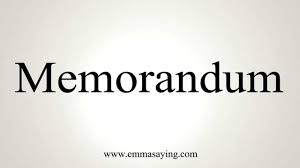
A memorandum on culture’s impact on communication
Order Instructions:
I need it to be written in a memo format. I’ve attached detailed instructions
SAMPLE ANSWER
A memorandum on culture’s impact on communication
July 7th, 2014
To: Instructor’s Name, Title
From: Student Name
Subject: Culture’s Impact on Communication
Introduction
Understanding the challenges as well as opportunities of intercultural communication is of major importance. A person will be able to develop effective intercultural communication which will allow him/her to foster more respect and acceptance, dismiss myths, develop more cooperative relationships with other people, and break down stereotypes (LeBaron, 2013). Communicating with persons from dissimilar cultures could at times be rather challenging given that unintentional offenses and misinterpretations are common.Understanding the challenges and opportunities of intercultural communication will help to improve cross-cultural communication within the organization. It will allow people to appreciate and know the differences in cultural communication styles (LeBaron, 2013).
Discussion
The ideas of low context and high context refer to the way that persons communicate in dissimilar cultures. Low context basically means much information is exchanged clearly and unequivocally through the message itself and rarely is anything hidden or unclear. Persons who live in low-context cultures for instance Western cultures – Western Europe, Australia, New Zealand, and North America– have the tendency of following standards and rules very closely, being very task-oriented and having short-term relationships.Persons from low-context cultures value directness, facts and logic, and decisions are not based upon intuition, but facts. Communicators are expected to be efficient, forthright, and succinct in telling the action that is anticipated. To be totally clear and unequivocal, people from low-context cultures endeavor to utilize exact, specific words and expect them to be taken literally. Unambiguous, open contracts conclude negotiations. This is particularly dissimilar from speakers in high-context cultures who rely less on legal documents and language precision. High-context business persons might even mistrust contracts and be affronted by the lack of trust which they suggest. High context essentially means that considerable amount of unspoken information is indirectly, obliquely transferred in the course of communication. Persons in high context cultures such as South America, Asia, Middle East and Africa have the tendency of placing greater importance on loyalty as well as long-term relationships, and they have less rules and structure implemented (LeBaron, 2013). In essence, high-context cultures are contemplative, relational, intuitive and collectivist meaning that these cultures highlight interpersonal relationships. A vital initial step to any business transaction is to develop trust.
Responding well to dissimilar cultures when preparing for business communication is an integral strategy for business survival in the current global economy, and it pervades virtually every facet of business after that. Culture affects every area of business communication, which include product sourcing, human resources decisions, contract negotiations, marketing campaigns as well as production operations (Rush, 2011).
It is recommended that:
- When dealing with business with persons from different cultures, one should consider overcoming language barriers and understanding cultural dissimilarities.
- Each party in a business deal should take time to learn about the cultures of each other before interacting to reduce the chances of business deals being lost.
- Business persons should have an awareness of cultural attitudes towards business since this would help the business person in communicating effectively when he/she works with persons from different cultures.
Conclusion
In conclusion, understanding the challenges as well as opportunities of intercultural communication helps one to develop effective intercultural communication which will allow him/her to foster more respect and acceptance, dismiss myths and develop more cooperative relationships with others people.Responding properly to dissimilar cultures when preparing for business communication is vital for business survival in today’s global economy. For any questions regarding the content of this memo, you may contact Joy Adamson on 442-85300-712.
References
LeBaron, M. (2013).Communication Tools for Understanding Cultural Differences. Boston, MA: CRC Press.
Rush, M. (2011). Culture in Business Communication. Columbus, OH: Penguin Publishers.
We can write this or a similar paper for you! Simply fill the order form!




